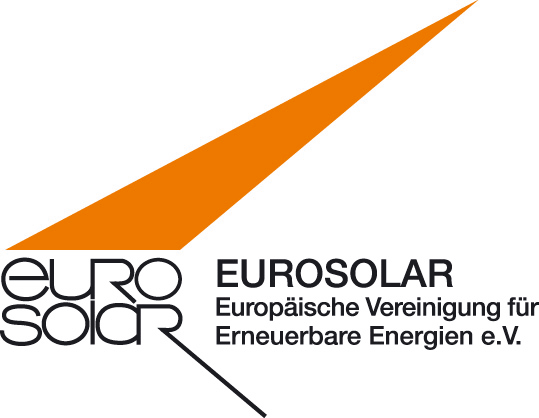Given the urgency of rapidly decarbonising the global energy system while massively ramping up biological agricultural practice, afforestation and carbon rich construction and manufacturing materials, the document is a call to heed the need to move beyond isolated model projects to the rapid and widespread proliferation of what Droege calls Ultra-low Carbon Living (ULCL) principles and practices, and their mobilisation across the entire built environment and industrial production system.“Creating required regulatory and policy frameworks, and to remove all the overt and hidden ways in which fossil content is subsidised” the paper states as its ‘Perth Protocol’, “is no longer just urgent but has now become manifestly overdue, as a result of political delays and incumbent industry inertia.” In the introduction, the document states two rather alarming facts: Firstly, 100 percent renewable energy will not be enough to fight the man-made climate catastrophe. Secondly, even the goal of zero emissions is still too ‘high’ to win this very fight since the current greenhouse gas (GHG) concentrations are already far too high for a stable climate. It describes the way from low carbon comfort to ultra-low carbon by not only displaying its historical context but also path out of that „predictable predicament“. Here we found the following three of ten elementary phenomena in an integrated urban infrastructure: 100% renewable power, heating and cooling, local networks, storage and sector coupling – not as celebrated but isolated projects but as minimum requirements in a wider ULCL economy. The paper combines extracts from www.uet2.com with other sources.
—————–
A puzzle of sectors
“…. The generation and transmission of renewable energy still takes mainly part in rural and peri-urban areas – not yet in urban centers at sufficiently significant scale. Many technologies easily implemented in lower density districts such as wind, water or biogas production are not yet widely adopted for application in urban areas – one exception is solar power and thermal energy. But even solar electricity is more widely applied in lower density and rural areas although its application in urban areas matches the existing grid infrastructure well. Yet in contrast to rural areas with grid integration problems energy infrastructure in urban centers is already well prepared for renewables integration. There are almost unlimited energy storage possibilities with enormous capabilities but also large differences. There is a fundamental necessity to combine and couple the different renewable energy sectors for electricity, heat, cold, gas and transport. Only in linking these sectors and using cheap and efficient energy storage options from one energy sector to solve challenges within another the energy transition process can be managed efficiently.” (excepted from Stadler and Sauer 2018)
Thermal city: a piece in the puzzle
“The heating sector represents one of the biggest challenges to achieving climate neutrality in (temperate and alpine) climates. Local municipalities have an important role to play here. In Germany challenges arise with the transformation of the heating sector and the possibilities for action facing local municipalities. There are two main areas of action: the energy-efficiency retrofitting of existing buildings, and the transformation of district heating systems. With respect to the energy-efficiency refurbishment of the building stock, it is important that cities and municipalities look at private, as well as public properties, and address concerns about historical preservation and social issues. District heating grids allow for the cost-efficient integration of renewable energy and waste heat sources; however, operating conditions, and in some cases network structures, must be modified accordingly.” (Excepted from Sparber et al 2018, Weiss et al 2018)
Demonstrating an urban assembly
“Germany has a long history of building exhibitions, beginning in 1901. A building exhibition is always more than a showcase for architecture: building exhibitions drive urban development (IBA Hamburg, 2009, 2010). Building exhibitions concentrate and coordinate private and public spending on construction in an area or region with specific problems, as well as specific opportunities. So, they represent a treasure trove of more than a hundred years’ experience when it comes to finding innovative solutions for the most pressing problems of urban community life. Many ideas still live on today. From 2007 through 2013 Hamburg hosted an international building exhibition (IBA) on Europe’s largest river island, Wilhelmsburg. It initiated 70 building and 14 social and cultural projects (IBA Hamburg, 2014) in order to demonstrate what is possible when an entire city district is remodeled according to social and environmental considerations. These projects were designed to show what the future of modern environment friendly town planning might be, and how cities could be remodeled in a climate-friendly or even climate-neutral way. Another advantage was that a neglected district of Hamburg with a negative image could be reinvented as a pioneer of energy-efficiency and social inclusion. To realize the “Future Concept Renewable Wilhelmsburg,” the IBA specified four operational fields. First of these was the refurbishment of the existing building stock, second, `new buildings of energetic excellence’, third ‚local district heating’, and fourth ‚local renewable energies’.” (Excepted from Hellweg 2018)
———————————–
For further reading:
Droege, P. Ed. 2018. Urban Energy Transition – Renewable Strategies for Cities and Regions. Elsevier.
Hellweg, U. 2018. Renewable Wilhelmsburg, Hamburg, Germany: Using the International Building Exhibition to Fight Climate Change. In: Droege, P. Ed. 2018. Urban Energy Transition – Renewable Strategies for Cities and Regions. Elsevier.
IBA Hamburg, 2009. IBA meets IBA. http://www.iba-hamburg.de/en/story/iba-meets-iba.html
IBA Hamburg, (Ed.), 2010. Energy Atlas—Future Concept Renewable Wilhelmsburg. Jovis, Berlin.
IBA Hamburg, 2014. Stadt in der Stadt bauen – Building the City Within the City. Jovis, Berlin.
Sparber, W., Roberto Fedrizzi and Chiara Dispasquale. Thermal City: Comprehensive Guide to the Heating and Cooling of Urban Areas. In: Droege, P. Ed. 2018. Urban Energy Transition – Renewable Strategies for Cities and Regions. Elsevier
Stadler, I. and Michael Sauer. 2018. Urban Energy Storage and Sector Coupling. Ibid.
You can access this article as pdf document here.
{fastsocialshare}
